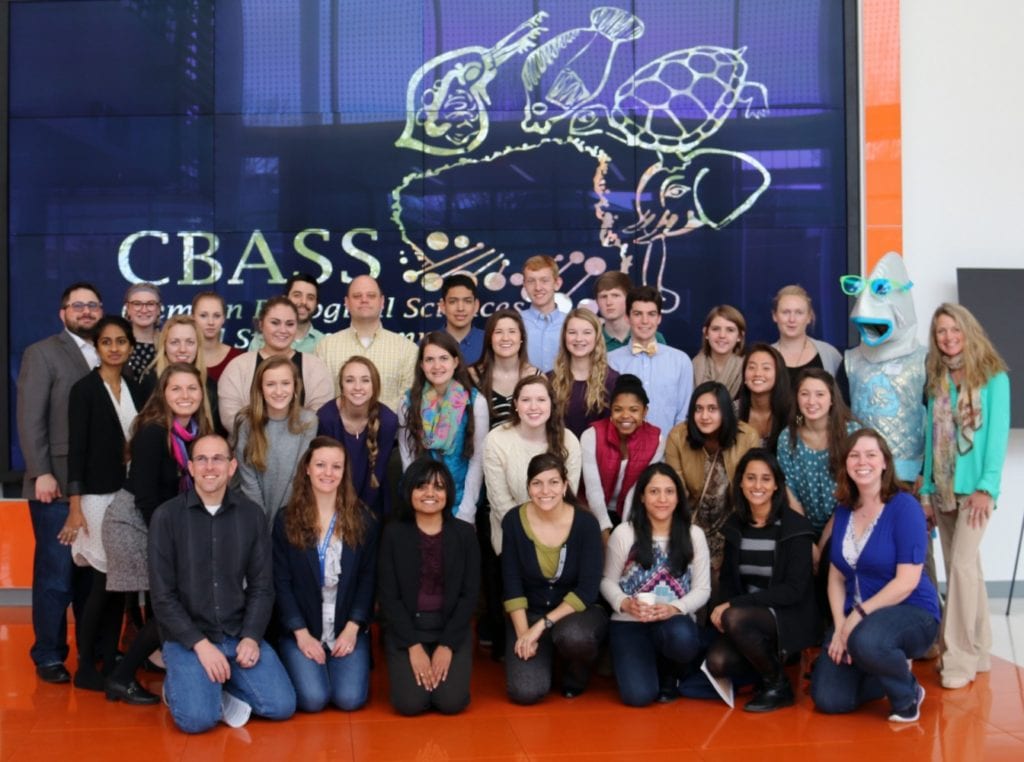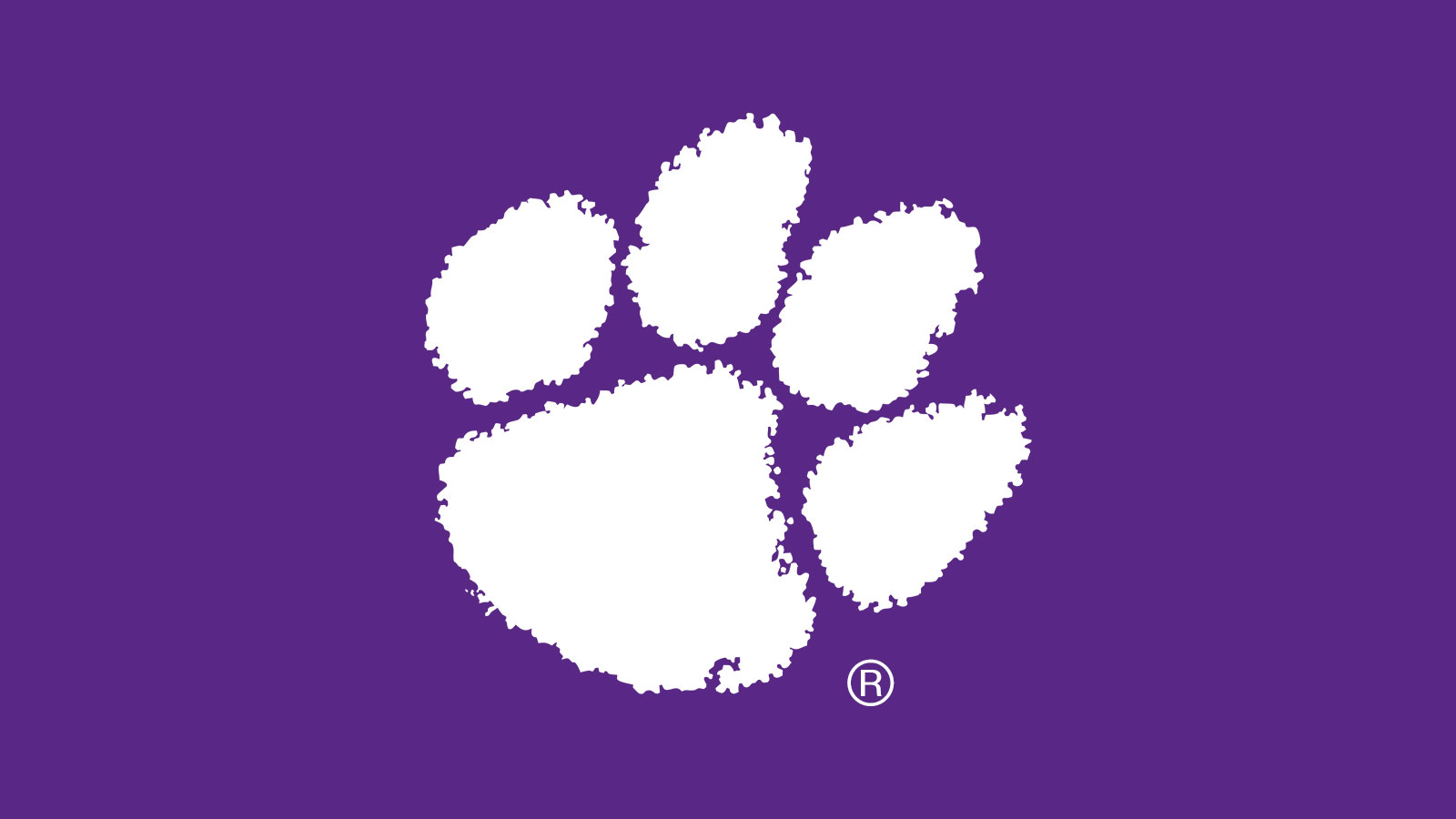CLEMSON – With a second full year officially under its belt, Clemson University’s groundbreaking “What’s in Our Waters” project continued to wow everyone involved.
On Feb. 20, dozens of smiling faces gathered for a group photo inside Clemson’s recently opened Watt Family Innovation Center, where students from Daniel High School presented posters displaying their research that examined the water quality of Indian Creek in the Clemson Experimental Forest.
One of the smiling faces belonged to Clemson Ph.D student Namrata Sengupta, who was part of the original team of graduate students that first envisioned the outreach service project in the summer of 2013.
Clemson Extension agent Cathy Reas Foster has also been involved with the WOW project since its inception. In collaboration with Pickens 4-H Extension agent Janine Sutter and Pickens County stormwater manager Scottie Ferguson, Foster has mentored graduate students, connected the group to Daniel High and also found ways to provide funding.
The project started in earnest in 2014-15, when Sengupta began working with fellow mentors and a science teacher at Daniel High to get young students interested in the natural world – both inside the classroom and outside in the field.

“It’s cool because the students from Daniel get to present their work in front of graduate students, professors and other scientists,” said Sengupta, who is closing in on her Ph.D in environmental toxicology and has therefore handed over the project’s reins to Erica Linard, a fellow student. “Year one was successful, and year two even more so.”
The WOW event at the Watt Center was part of the Clemson Biological Sciences Annual Student Symposium (CBASS). The eighth annual event was raucous and bursting with energy. WOW’s portion concluded with two groups of students winning awards for their presentations: Riley Owens, Kaitlin Bryant and Lauren Slann won Best Poster Title for “Conductivities in Different Watersheds”; Ria Gabrielli, Sarah Harding, Ellen McAlpine and Madison Ray won Best Presentation Title for “Effect of pH on Stream Health.”
“One of the things I found exciting this year versus last year was that normally the boys were the ones who were finding salamanders and bugs, while we didn’t get as much enthusiasm about the outdoors part from some of the girls,” said Linard, a Ph.D student in environmental toxicology who is the current coordinator of the WOW project. “But this year I had several girls who were really excited to get into the creek. And all the students had a lot of questions about our other local streams. It was nice to see how informed they were about water quality and the importance of our natural resources.”
The WOW model involves four phases:
- An in-class presentation at Daniel High where Clemson graduate students talk to the high-schoolers about environmental projects and careers;
- A field trip to Indian Creek, where expert mentors teach high-schoolers how to analyze water quality through macroinvertebrates and chemical and physical parameters;
- A return to the classroom to analyze the data they’ve collected from the field; and
- A presentation of their scientific research project at CBASS.
“I’m excited how this program connects students to the importance of healthy waterways,” said Foster, who is Clemson Extension’s natural resources agent for Pickens County. “And I believe the WOW model will continue to grow and help school communities across the state become more aware of water pollution issues and solutions.”
Sengupta, who was the WOW project coordinator until this year, has shown off the model at three venues over the past several months. In October 2015, she presented at the South Carolina Marine Educators Association conference at Roper Mountain Science Center in Greenville. In November 2015, she presented at a national meeting of the Society of Environmental Toxicology and Chemistry in Salt Lake City. In early February of this year, she spoke at a women’s leadership conference in the Hendrix Center on the campus of Clemson University.
“I received very good feedback at all three places,” Sengupta said. “People from across the state and nation are interested in the model, and they think it will work for other college campuses and high schools.”
A new component of this year’s project was the addition of Nikeetha D’Souza, a Ph.D student in Clemson’s School of Education. D’Souza joined the team to examine the WOW project’s effectiveness as a teaching tool.
“My expertise is education, teaching and learning, so I was interested in what the students are learning and how they are going through the process,” said D’Souza, a consulting volunteer for WOW. “One of the things that is unique about this model is that it fits into the curriculum, as opposed to adding to it, which makes it more manageable and realistic. All of this deals with how scientists work. And so the students learn not only the content of science but the culture.”
D’Souza said that this is the first year the WOW project has conducted pre- and post-class surveys that she designed to examine how much the students are actually learning.
“There is a popular test that a lot of educators use called ‘Draw a Scientist.’ You basically get a bunch of kids and have them draw what they think a scientist looks like,” D’Souza said. “The kids almost always draw an older man – and most of the time he is doing work in a laboratory. They don’t think of scientists as being women or as being young. And they don’t think that scientists actually work and interact in a variety of places. But in reality, women and young people are scientists, too, and they work in all kinds of settings and environments. So with the survey one of the things we’d like to see is if the students’ perceptions change from what they believed at the start of the class to what they believe after they’ve finished it. The results aren’t in yet, but we’re eager to find out.”
Chuck Conrad, who is the advanced placement environmental science instructor at Daniel High, said that he and his students have been honored to be given the opportunity to collaborate with Clemson.
“This is our second year working with Clemson graduate student mentors, and their guidance and input have been invaluable,” Conrad said. “We have expanded this year from five groups to seven, which has gotten a lot more of our high school students involved. They’re learning research techniques, how to present a hypothesis, how to look at data and then how to come up with a good abstract so that they can understand the process of the scientific method.”
James Wilkins, who is the education and resource coordinator for the Clemson Experimental Forest and the South Carolina Botanical Garden, said the WOW project has helped introduce youths to the wonders of the 17,500-acre forest.
“These youths get invaluable experience with graduate student mentors and they learn to do real science that they can apply at whatever college they might choose to attend,” Wilkins said. “I think this shows what an invaluable treasure the forest is for research and education, and we want to do more of it by using this model for other schools and other classes and by creating some long-term programs and research. If so, we will get the added benefit of important scientific data that can help guide us in the future.”
Malia Earle of Central was one of the presenters at the symposium. Her team, which included Issac Blackwell, Charlotte Gray and Tayler Smith, created a poster titled “Relationship Between Dissolved Oxygen and Macroinvertebrate Populations.”
“I’ve really enjoyed this program and learned a lot,” Earle said. “Mostly, I was fascinated by the macroinvertebrates that live in the creek. Overall, it was a great experience for me and my teammates.”
Get in touch and we will connect you with the author or another expert.
Or email us at news@clemson.edu

